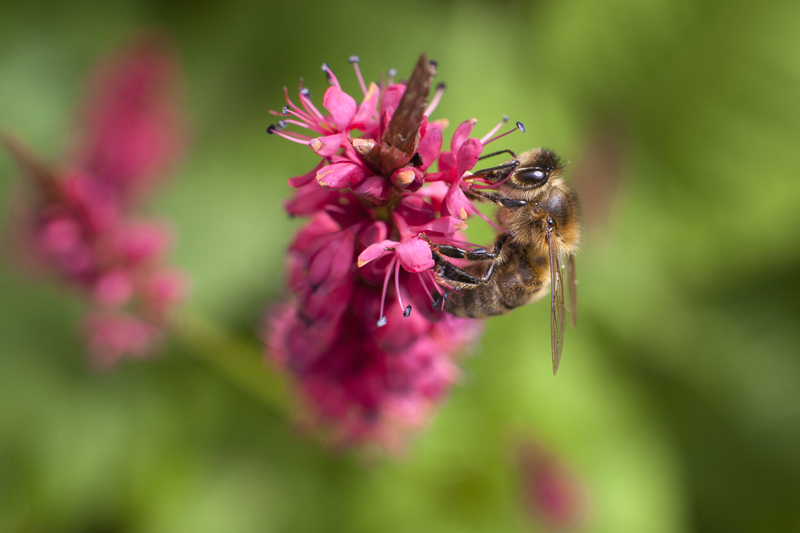Beginner's Guide to Flourishing Gardens: 9 Essential Tips
Posted on 24/05/2025
Beginner's Guide to Flourishing Gardens: 9 Essential Tips
Dreaming of a lush, vibrant garden but not sure where to start? Whether you dream about thriving flowers, fresh vegetables, or a zen-like green retreat, cultivating a flourishing garden is within reach--even for beginners. With the right guidance and some dedication, you can grow a gorgeous space, boost your well-being, and even contribute to a greener planet. Dive into our comprehensive, SEO-optimized Beginner's Guide to Flourishing Gardens and unlock essential tips for gardening success!

Why Start Gardening?
Gardening offers more than just beauty; it's a rewarding hobby with tangible benefits:
- Mental wellness: Gardening reduces stress and enhances mood.
- Physical activity: Digging, planting, and weeding help keep you fit and active.
- Fresh produce: Grow your own organic vegetables and herbs.
- Biodiversity: Support pollinators and improve local ecology.
But how do you begin and set your garden up for success? Start with our nine core tips for beginner garden success!
1. Understand Your Garden's Environment
_Analyze Your Soil, Sunlight, and Climate_
Before planting anything, take time to observe your garden. The most flourishing gardens begin with understanding local conditions:
- Soil Type: Is it clay, sandy, silty, loamy, or peaty? Consider a simple soil test kit--these are often available at garden centers--to check pH and major nutrients.
- Drainage: Does water puddle after rain, or drain quickly? Proper drainage prevents root rot and other issues.
- Sunlight: Track which parts receive morning sun, afternoon heat, or are shaded throughout the day.
- Microclimate: Fences, walls, and trees change wind patterns, heat, and humidity in your garden.
Tip: Observe your space for at least one week before designing your layout, and keep a gardening journal to note details and changes.
2. Start Small & Choose Easy Plants
_Beginner-Friendly Choices Lead to Success_
Don't bite off more than you can chew! A compact, well-tended bed is more rewarding than a sprawling, chaotic patch. Start with container gardens, raised beds, or a small section of your yard. Some fuss-free plants perfect for first-timers include:
- Marigolds
- Sunflowers
- Zinnias
- Radishes
- Lettuce
- Mint or basil
- Lavender
Research what grows best in your region's climate and soil. Your local garden center or agricultural extension office can offer lists of native, low-maintenance species, helping you on your path toward a robust beginner's flourishing garden.
3. Prepare the Soil Properly
Healthy Soil = Healthy Plants
Rich, well-aerated earth is the foundation of all thriving gardens. Prep the area before planting by:
- Removing weeds, roots, and debris
- Loosening compacted areas with a spade or fork
- Mixing in organic amendments like compost or well-rotted manure
- Correcting pH with lime (to raise) or sulfur (to lower), if recommended by your soil test
Don't overlook soil health! Adding organic matter improves structure, moisture retention, and fertility, supporting robust growth and vibrant blooms.
4. Learn Proper Watering Techniques
_Water Wisely for Maximum Growth_
Overwatering is one of the most common mistakes new gardeners make. Here's how you can ensure plants receive just the right amount:
- Water early in the day--this reduces evaporation and gives leaves time to dry, minimizing disease risk.
- Target the roots, not the leaves, with a gentle stream or soaker hose.
- Check moisture levels by sticking your finger 2 inches into the soil; water only if dry.
- Adjust for weather--plants require less water in cool or rainy periods, and more during hot, dry spells.
If container gardening, ensure pots have adequate drainage holes to prevent root rot.
5. Focus on Spacing and Plant Placement
_Let Plants Breathe and Grow Strong_
Crowded beds lead to weak, disease-prone plants. Always check seed packets or plant tags for recommended spacing. Here's why:
- Proper air circulation reduces fungal diseases.
- Plants have enough space to reach full size and maturity.
- Roots don't have to compete for water and nutrients.
- Sunlight reaches all sections, preventing leggy, weak growth.
Group plants with similar sunlight, moisture, and nutrient needs. Companion planting (like tomatoes and basil or carrots and onions) can enhance yields and discourage pests.
6. Stay on Top of Weeds and Pests
_Prevention Is Easier Than Cure_
Weeded beds and healthy plants are key to a flourishing garden. Here's how can new gardeners keep trouble away:
- Hand-weed regularly, especially after rain when weeds come up easily.
- Mulch, mulch, mulch! A 2-3 inch layer of straw, wood chips, or shredded bark conserves moisture, suppresses weeds, and enriches soil as it decomposes.
- Inspect plants weekly for signs of pests or disease. Early action is easier and more effective.
- Encourage beneficial wildlife--birds, ladybugs, and frogs help control pests naturally.
Tip: Choose organic pest control when possible, such as neem oil or hand removal, to protect pollinators and the environment.
7. Feed Your Garden the Right Way
_Balanced Nutrition Sustains Healthy Growth_
Plants, like people, thrive when well-nourished. Overfeeding or using the wrong fertilizer can harm more than help. For the best garden outcomes:
- Use slow-release, organic fertilizers; they're less likely to burn plants.
- Follow package instructions--more isn't always better!
- Compost kitchen scraps and garden waste to create free, nutrient-rich amendments.
- Feed during the growing season (spring/summer), not during plant dormancy (fall/winter).
8. Prune and Deadhead for Continuous Blooms
_Smart Pruning Keeps Plants Healthy and Beautiful_
Regular pruning and deadheading encourage healthier, lusher gardens. Not only does this improve appearance, it also redirects plant energy into producing more flowers, fruits, or new shoots.
- Deadhead flowers (remove faded blooms) to encourage more growth and longer blooming periods.
- Prune shrubs and perennials according to their type; some bloom on old wood, others on new.
- Trim damaged, diseased, or crossing stems to promote airflow and reduce the risk of disease.
Invest in a sharp pair of pruners, clean them after use, and learn the timing for each plant in your garden.
9. Enjoy, Observe, and Learn
_The Secret to a Thriving Beginner's Garden_
Consistency and observation nurture the best gardens. Every flourishing garden is the result of ongoing attention and adaptation. Spend time in your garden regularly--not just to work, but to enjoy and learn from it.
Keep a gardening journal or take photos to track changes, pinpoint successes, and spot issues early. Over time, you'll learn what works best in your unique conditions. Don't be afraid to experiment or make mistakes--every season offers new lessons.
Common Beginner's Mistakes & How to Avoid Them
- Planting out of season: Always check local frost dates and seed packet instructions.
- Overwatering or underwatering: Pay close attention to plant needs, container drainage, and weather patterns.
- Ignoring soil health: Amend and test your soil annually for best results.
- Choosing the wrong plants: Match selections to your local climate and microclimate, and start with proven beginner species.
Frequently Asked Questions for New Gardeners
_What's the easiest way to start a garden as a complete beginner?_
Begin with container gardening or a small, defined raised bed. These options are manageable and let you control soil and drainage more easily than digging an in-ground plot.
_How do I know when to water my plants?_
Check soil moisture 2 inches below the surface regularly--if dry, it's time to water. Be extra attentive to container plants, as they dry out faster.
_What tools do I really need as a beginner gardener?_
- A trowel for planting and digging
- Watering can or hose
- Pruning shears
- Gardening gloves
- Hand fork or weeder (optional, but helpful)

Conclusion: Cultivate Your Flourishing Garden Today!
Every seasoned gardener once started as a beginner! With a little planning, constant observation, and these essential tips, anyone can enjoy the journey from novice to master. The best gardens are grown with patience, love, and continual learning.
Embrace mistakes as opportunities, swap advice with fellow gardeners, and celebrate every green shoot and bright blossom. Good luck, and may your beginner's garden flourish beyond your wildest dreams!
For more tips and tailored advice, bookmark this page and return often--successful gardening is a lifelong adventure.
Quick Reference: 9 Essential Tips for Flourishing Gardens
- Understand Your Garden Environment
- Start Small & Choose Easy Plants
- Prepare the Soil
- Water Correctly
- Space & Position Plants Well
- Stay on Top of Pests & Weeds
- Feed Strategically
- Prune & Deadhead Regularly
- Observe, Learn & Enjoy
Start your gardening journey today and watch your beginner's garden bloom into an oasis of life and color!

